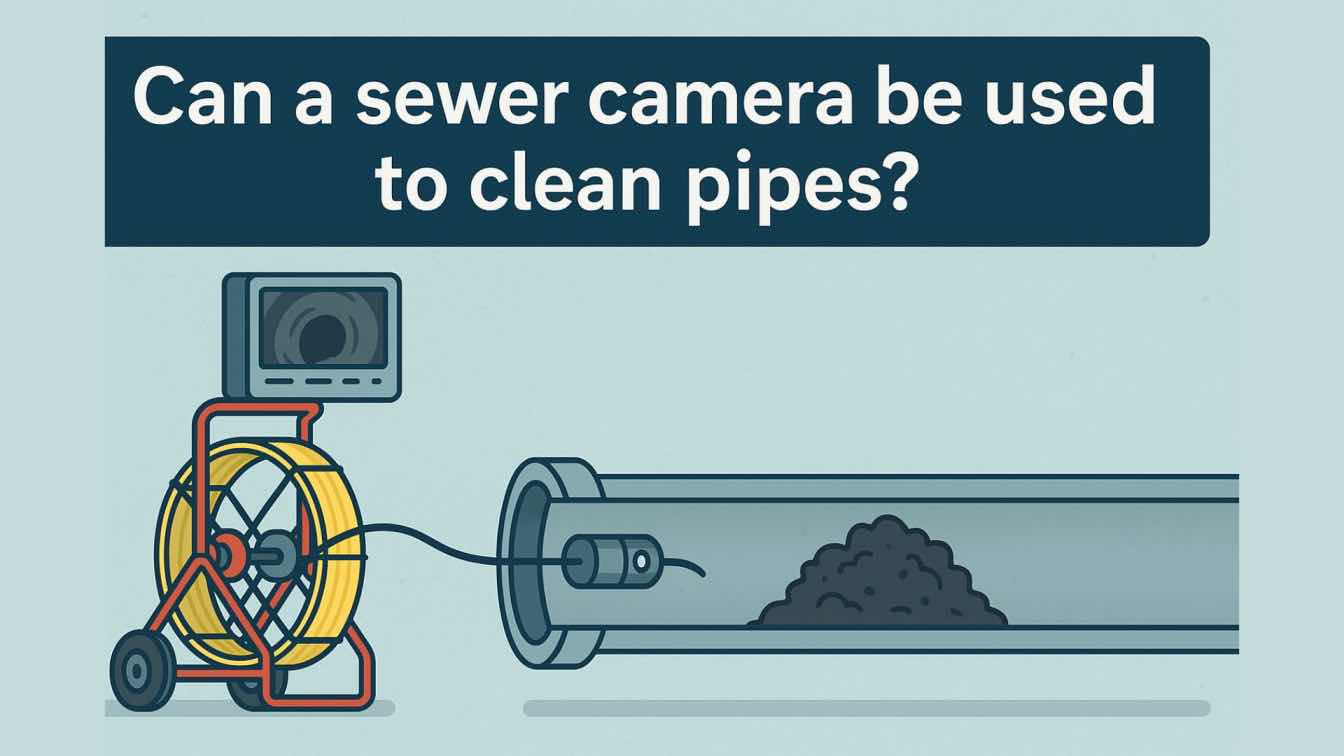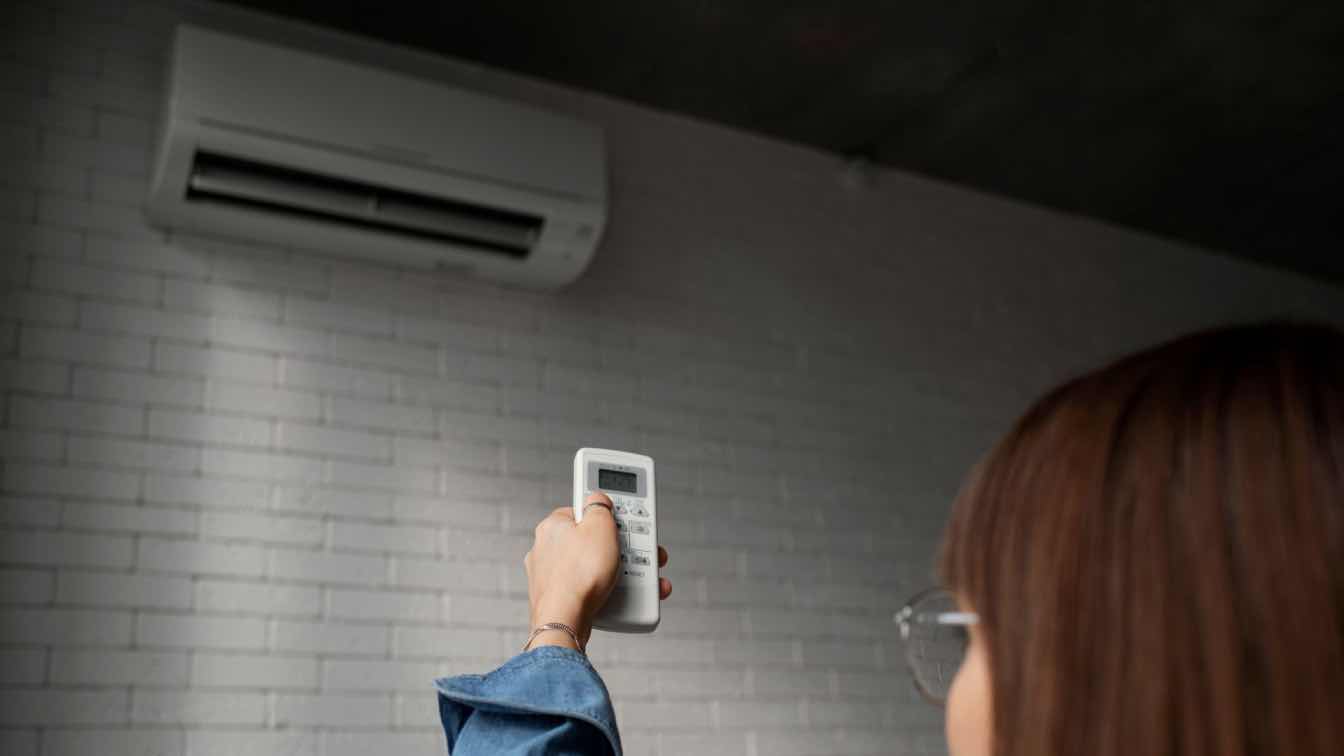No, sewer cameras aren’t designed to clean pipes—but they’re essential in the cleaning process.
When you’re dealing with slow drains, bad odors, or recurring clogs, a sewer camera won’t remove the blockage itself. Instead, it helps pinpoint the exact location and cause of the issue—whether it’s grease buildup, root intrusion, or a collapsed pipe. This makes any cleaning or repair work faster, safer, and more accurate.
What Is a Sewer Camera Used For?
A sewer camera is a diagnostic tool that allows you to see inside your plumbing and drain lines without digging or disassembling anything.
It typically consists of:
- A waterproof camera head with LED lights
- A long push rod or cable (usually 50–200 ft)
- A monitor that shows real-time video of the inside of your pipes
- Optional features like video recording, distance counters, and sonde locators
Plumbers use these devices to inspect the interior of pipes, identify problems, and pinpoint their exact locations.
Why a Sewer Camera Can’t Clean Pipes?
While sewer cameras are incredibly useful, they aren’t built for cleaning. Here's why:
1. No Physical Cleaning Mechanism
Sewer cameras don’t have brushes, jets, or augers. They’re not equipped to remove clogs, scrape off buildup, or blast away tree roots.
2. Delicate Electronics
The camera head contains sensitive components, including lighting and lenses. Running it through debris or using it like a cleaning tool could damage it.
3. Push Cable Isn’t Built for Force
The semi-rigid cable used to push the camera through the pipe isn’t designed to force through solid blockages like a drain snake or hydro-jetter would.
Bottom line: A sewer camera helps you see the problem—but you’ll need other tools to fix it.
Tools That Clean Pipes
If you're looking to clean your pipes, here are the tools that actually get the job done:
Plumbing Snake (Auger): Breaks through simple clogs in toilets, sinks, and drains.
Hydro-Jet: Uses high-pressure water (up to 4,000 PSI) to clear grease, scale, and roots.
Chemical Cleaners: (Use with caution!) Can dissolve minor blockages but may damage older pipes.
Pipe Brushes: Used in combination with manual or powered tools to scrub the inside of pipes.
These tools can be used after inspecting the pipe with a sewer camera to ensure you’re targeting the right spot.
How Sewer Cameras and Cleaning Tools Work Together?
Although sewer cameras don’t clean pipes themselves, they play a crucial role in making drain cleaning more precise and efficient. Here’s how the two tools complement each other step-by-step:
1. Diagnose Before You Clean
Before reaching for a hydro jet or drain snake, use a sewer/plumbing camera to identify the root cause.
Is it a grease clog, a collapsed section, or tree roots breaking into the pipe?
For example, if you see a soft blockage like grease, a hydro jet works well. But if the camera reveals pipe damage or root intrusion, mechanical cutting or even pipe replacement may be needed. A visual inspection helps you avoid unnecessary or even harmful cleaning attempts.
2. Clean With Accuracy
Instead of snaking the entire pipe blindly, the camera pinpoints where and what to clean.
If the blockage is 47 feet in, you don’t waste time on the first 46 feet.
This targeted approach reduces labor time, prevents overuse of tools, and avoids damaging clean sections of the pipe.
3. Confirm After Cleaning
Once the job is done, use the camera again to check the results.
Did the clog fully clear? Is the water flow restored? Any leftover debris?
This final step acts like a quality check, ensuring the pipe is truly clean and undamaged—before you close up or hand over the job.
Why Homeowners Should Consider Sewer Cameras?
Even if you’re not cleaning pipes yourself, having a sewer camera on hand offers major benefits:
- Avoid unnecessary service calls by identifying minor issues early
- Verify the plumber's work after repairs or cleaning
- Inspect before buying a house to avoid hidden plumbing disasters
- Monitor known problem areas regularly
Many modern models, such as the Sanyipace sewer camera, are compact, user-friendly, and budget-friendly enough for DIYers while still powerful enough for pros.
When to Use a Camera vs. a Cleaning Tool?
|
Situation |
Use a Camera? |
Use a Cleaning Tool? |
|
Diagnosing a slow drain |
✅ |
🚫 (Until confirmed) |
|
Tree root removal |
✅ (To locate) |
✅ (With hydro jet) |
|
Removing grease buildup |
✅ |
✅ |
|
Verifying line condition |
✅ |
🚫 |
|
Clearing a hard obstruction |
✅ |
✅ (Use auger/snake) |
Pro Tip: Combine Tools for Best Results
Professional plumbers always pair sewer cameras with cleaning tools. A good workflow looks like this:
1. Inspect – Find the clog or damage
2. Clean – Use the right tool (snake, jet, etc.)
3. Verify – Use the camera again to confirm it's clear
This approach avoids guesswork and saves on repeat visits.
FAQ: Sewer Cameras & Cleaning
1. Can I Push Through a Clog With the Sewer Camera?
No. It’s not designed to clear blockages and may damage the camera.
2. Will the Camera Tell Me What Kind of Blockage It Is?
Yes! You’ll be able to visually identify hair clogs, grease, roots, collapsed pipes, etc.
3. Do Plumbers Clean During an Inspection?
Sometimes. If the issue is minor, they may do both. But often, inspection and cleaning are separate services.
4. Should I Buy a Sewer Camera for My Home?
If you live in an older home or have frequent plumbing problems, purchasing a sewer camera is a wise investment-especially models between $200 and $1,500.
Final Thoughts
While a sewer camera cannot clean your pipes, it is an essential part of the cleaning process. Sewer cameras provide a clear view of the inside of the plumbing system, helping homeowners and professionals avoid guesswork, target problem areas, and choose the right cleaning method. Think of it as the eyes behind every effective sewer cleaning job.





